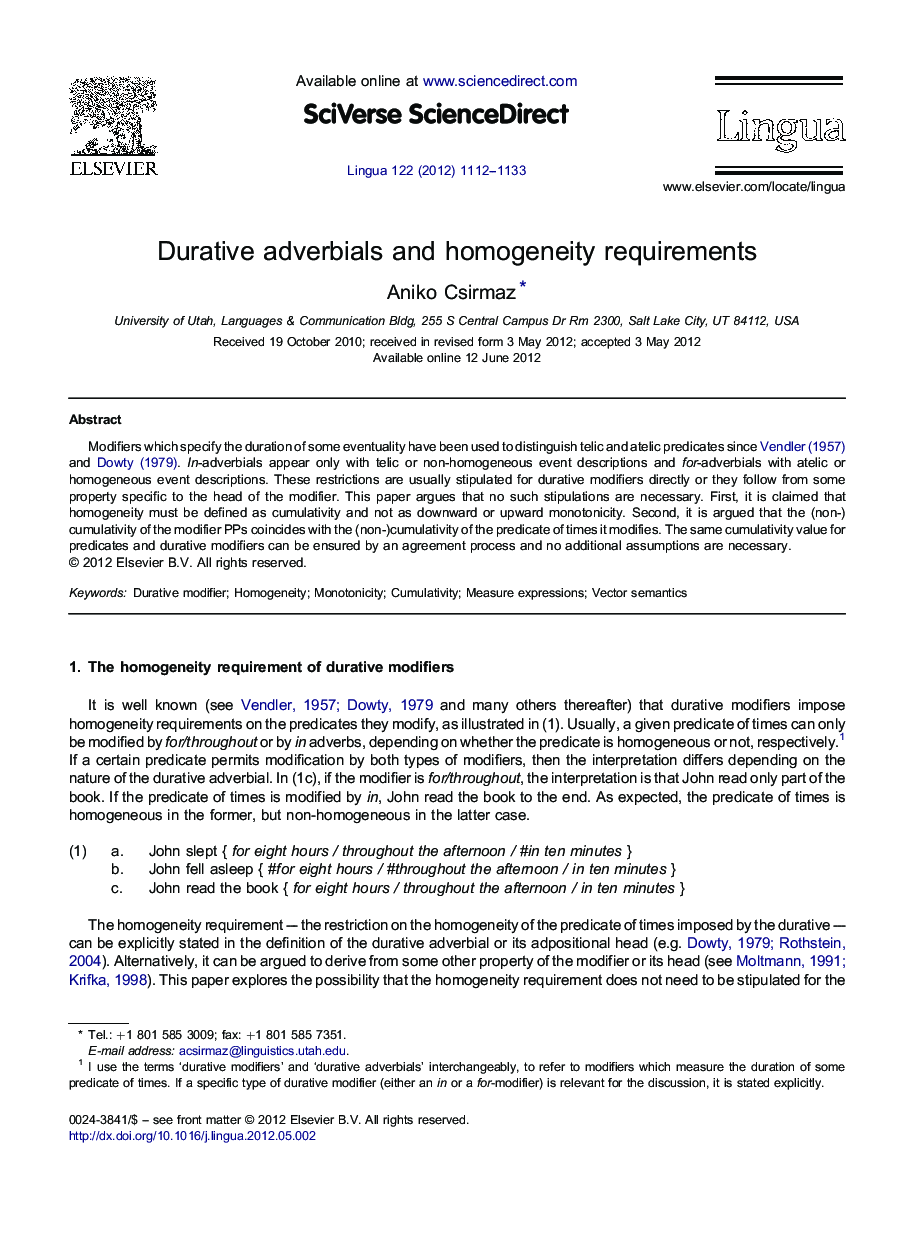| Article ID | Journal | Published Year | Pages | File Type |
|---|---|---|---|---|
| 936052 | Lingua | 2012 | 22 Pages |
Modifiers which specify the duration of some eventuality have been used to distinguish telic and atelic predicates since Vendler (1957) and Dowty (1979). In-adverbials appear only with telic or non-homogeneous event descriptions and for-adverbials with atelic or homogeneous event descriptions. These restrictions are usually stipulated for durative modifiers directly or they follow from some property specific to the head of the modifier. This paper argues that no such stipulations are necessary. First, it is claimed that homogeneity must be defined as cumulativity and not as downward or upward monotonicity. Second, it is argued that the (non-)cumulativity of the modifier PPs coincides with the (non-)cumulativity of the predicate of times it modifies. The same cumulativity value for predicates and durative modifiers can be ensured by an agreement process and no additional assumptions are necessary.
► The paper examines durative adverbials and event descriptions they modify. ► Parallel structures are proposed for durative and spatial PPs headed by the same P. ► Monotonicity and cumulativity properties are discussed for PPs and event descriptions. ► It is argued that homogeneity should be defined as cumulativity. ► Durative adverbials and event descriptions must have matching cumulativity values.
